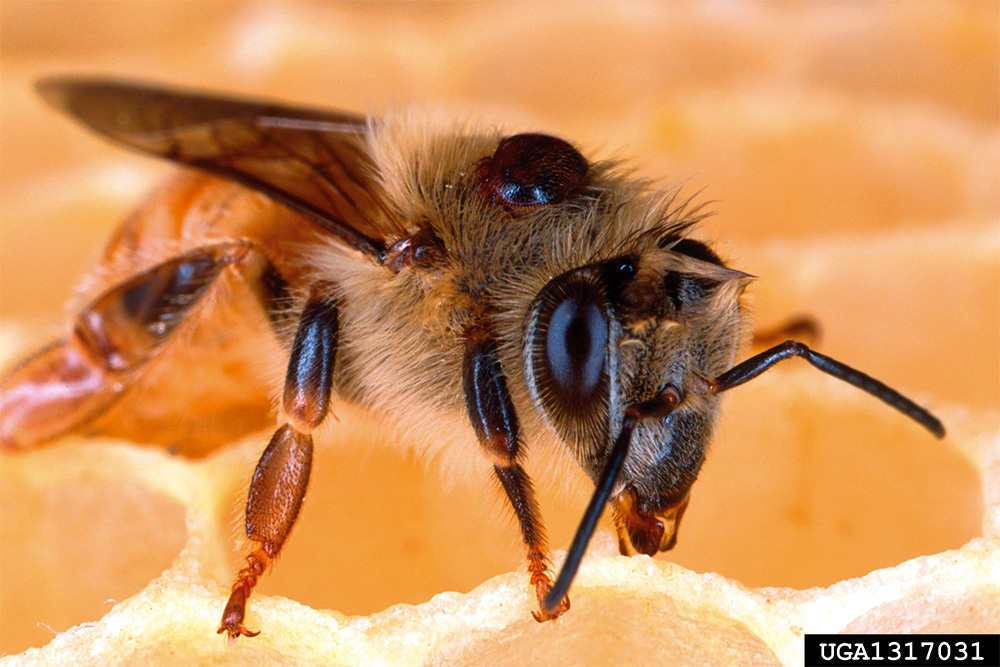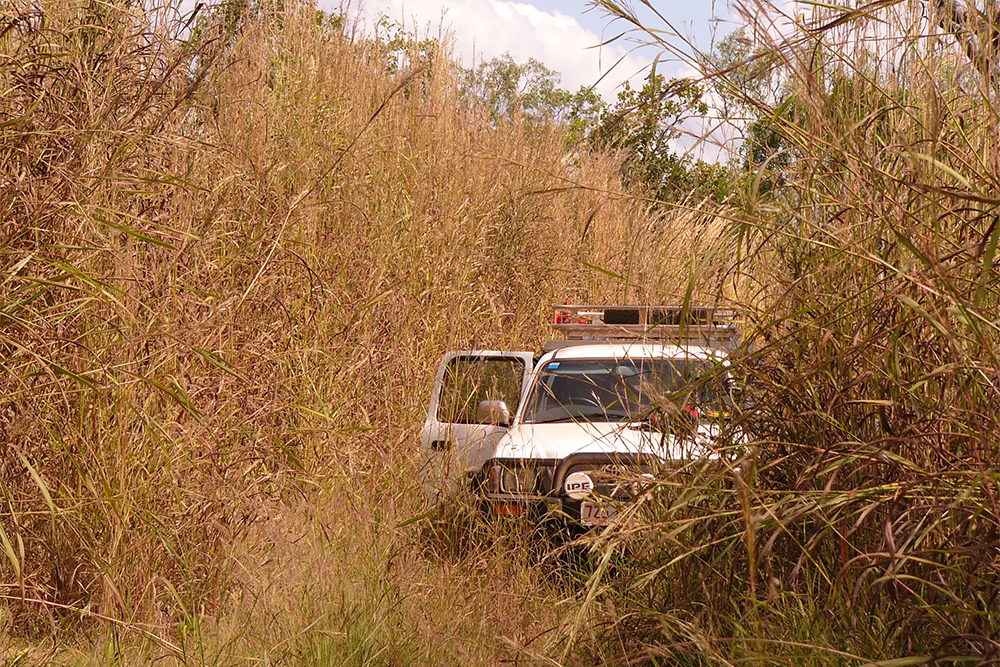Varroa mites (Varroa destructor and Varroa jacobsoni) are tiny red-brown external parasites of the European honey bee (Apis mellifera) and are about the size of a sesame seed. Until recently both species were exotic to Australia, however in June 2022 Varroa destructor was detected in a sentinel hive at the Port of Newcastle. After a 14-month eradication response under the Emergency Plant Pest Response Deed, in September 2023, it was determined that eradication of Varroa destructor was no longer achievable due to range of technical, operational, legal, economic, environmental, and social factors. Varroa jacobsoni has been detected in Townsville and Brisbane on several occasions but has been eradicated each time and is considered exotic to Australia.
Although varroa mites can feed and live on adult honey bees, they mainly feed on the brood (larvae and pupae) and can only reproduce on the brood of Apis mellifera, the European honey bee. Symptoms include deformed pupae and adults and colony decline. The mites can also spread viruses. Surveillance has shown that Australia remains free of the serious viruses spread by varroa mites, such as deformed wing virus, acute bee paralysis virus and slow bee paralysis virus.
Varroa mites spread through beekeeping equipment, drone bees drifting from hive to hive, foraging worker bees coming into contact with other worker bees, and when swarming. Varroa mites can survive for at least five days without a honeybee host.
The life cycle of the varroa mite involves the female mite entering the brood cell of an advanced bee larva just before the cell is capped - sealed with wax, by nurse bees. The mite feeds on the fat body tissue of the developing bee larvae.
The female varroa mite can lay up to six eggs. The first egg always develops into a male mite and the rest are female. The male mite will mate with the female mites as they mature. The female varroa mites all emerge from the brood cell with the emerging honeybee. The male mite will die inside the cell.
There can be 24–30 breeding cycles for the mites in a year and as long as honey bee brood is present, the mites will breed and their numbers will increase exponentially.
The response to varroa mite in NSW is now in the transition to management phase. The aim of this phase is to minimise the ongoing effects of varroa mite naturalisation on the European honey bee industry and pollination-reliant industries with a focus on business continuity. As part of the varroa mite transition to management program, varroa mite management workshops are planned or have been held for commercial and recreational beekeepers across Australia. Beekeepers are being advised to use an Integrated Pest Management approach to managing varroa mite, with the objective of keeping varroa mite numbers below a level where they cause economic damage to the colony and beekeeper. The techniques used include chemical control, cultural control (breeding for varroa resistance traits and brood interruption) and mechanical control (screened bottom boards and drone brood trapping).
Find out the latest information by visiting the NSW DPIRD website or Outbreak.gov.au.





